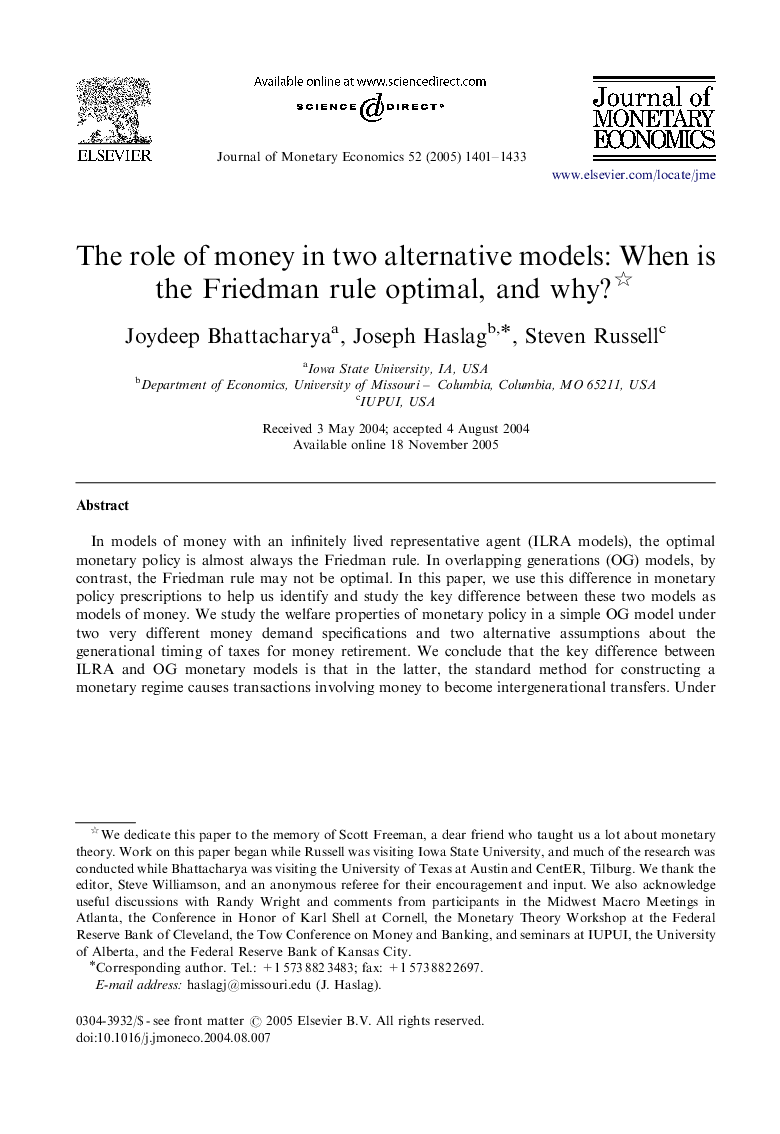| Article ID | Journal | Published Year | Pages | File Type |
|---|---|---|---|---|
| 10478459 | Journal of Monetary Economics | 2005 | 33 Pages |
Abstract
In models of money with an infinitely lived representative agent (ILRA models), the optimal monetary policy is almost always the Friedman rule. In overlapping generations (OG) models, by contrast, the Friedman rule may not be optimal. In this paper, we use this difference in monetary policy prescriptions to help us identify and study the key difference between these two models as models of money. We study the welfare properties of monetary policy in a simple OG model under two very different money demand specifications and two alternative assumptions about the generational timing of taxes for money retirement. We conclude that the key difference between ILRA and OG monetary models is that in the latter, the standard method for constructing a monetary regime causes transactions involving money to become intergenerational transfers. Under alternative government fiscal/monetary regimes that offset these intergenerational transfers, the Friedman rule is always optimal.
Keywords
Related Topics
Social Sciences and Humanities
Economics, Econometrics and Finance
Economics and Econometrics
Authors
Joydeep Bhattacharya, Joseph Haslag, Steven Russell,
